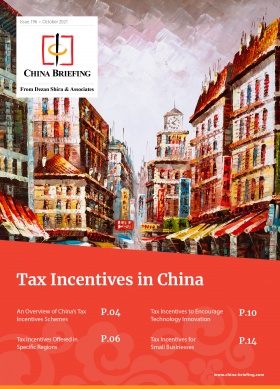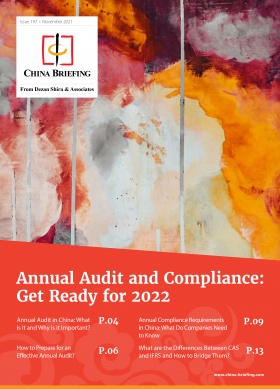China Lowers Tariffs on 954 Products from January 1, 2022
China will adjust import and export tariffs on selected goods in 2022 in a bid to support high-quality development and opening up, the Ministry of Finance (MOF) said on Wednesday.
According to the 2022 Tariff Adjustment Plan released by the Customs Tariff Commission of the State Council (‘the commission’) on December 15, 2021, China will lower import tariffs on 954 products and increase import and export tariffs on some commodities in 2022. The plan will help adapt to the supply-demand changes in the domestic market, guide resource allocation, support innovation, and industrial transformation, and promote low carbon development.
To promote the high-quality opening of markets, China will apply agreed tax rates on selected goods originating in 29 countries and regions for 2022 in accordance with China’s free trade agreements (FTA), including the Regional Comprehensive Economic Partnership (RCEP) and the China-Cambodia FTA, both of which will come into effect on January 1, 2022.
In addition, to keep consistency with the revised Harmonized System for Commodity Names and Codes and relevant WTO rules – China will make technical conversions of certain tariff items. After the adjustment, China will have in total 8,930 tariff items.
What are the changes and which items will be affected?
China to lower tariffs on 954 commodities
From January 1, 2022, China will impose interim import tax rates on 954 commodities, which were previously subject to the default most favored nation (MFN) tariffs that are higher. These commodities include:
- Anti-cancer drugs and medical products: To reduce the financial burden on patients, impose zero tariffs on radium chloride injections, a new anti-cancer drug, and reduce import tariffs on some medical products, including intracranial thrombectomy stents and artificial joints.
- Aquatic products and sports equipment: To boost consumption upgrading and enhance the atmosphere of the winter Olympic Games, reduce import tariffs on some high-quality aquatic products, including salmon and cod, as well as baby clothes, dishwashers, and skiing gear.
- Oil paintings and antique artwork: To adapt to demand in cultural consumption, impose zero tariffs on oil paintings and other artwork over 100 years old.
- High-efficiency auto parts and materials for environmental restoration: To improve the environment and promote green and low carbon development, reduce import tariffs on gasoline engine particle traps and electronic throttles for automobiles that can improve vehicle fuel efficiency, as well as peat used for soil
- Manufacturing components and raw materials: To optimize and upgrade manufacturing industries, lower import tariffs on key components such as high-purity graphite accessories, high-voltage cables for high-speed trains, membrane electrode assemblies, and bipolar plates for fuel cells, as well as raw materials needed by the food processing, household chemicals, and leather manufacturing industries, such as cocoa beans, plant oils, and animal
- Mineral resources: Lower import tariffs on natural resources, including pyrite and pure potassium chloride, which are in short supply domestically.
China to increase import and export duties on certain commodities
From January 1, 2022, China will raise import and export duties on some commodities to balance domestic demand and supply as well as upgrade its industries. The changes include:
- Reimposing MFN tariffs on some amino acids, lead-acid battery parts, gelatin, pork, and m-cresol, and abolishing interim import tax rates on these products.
- Raising import and export duties on phosphorus and blister copper to promote the transformation, upgrading, and high-quality development of relevant industries.
China to further reducing MFN tariff rates on IT products
From July 1, 2022, China will further trim MFN tariff rates (for the seventh time) on 62 IT products. After adjustments, China’s overall tariff level will remain at 7.4 percent.
China to apply conventional duty rates on products from 29 countries
To boost high-quality opening, China will continue applying conventional duty rates to some goods originating from 29 countries and regions, in accordance with FTAs and preferential trade arrangements agreed upon with these countries and regions.
- Bilateral FTAs between China and New Zealand, Peru, Costa Rica, Switzerland, Iceland, South Korea, Australia, Pakistan, Georgia, and Mauritius, as well as Asia-Pacific Trade Agreement (APTA), will further reduce conventional duty rates on certain products originating from the contracting countries.
- The RCEP and the China-Cambodia FTA will enter into force on January 1, 2022, which will also trigger tariff reductions.
China has been implementing a series of regulations to reduce import-export taxes and duties to promote a higher level of openness and domestic consumption.
The 2022 tariff adjustments reflect the country’s intention to secure its industrial and supply chains. They also aim to reallocate resources to promote technology innovation, industrial upgrades, and green development, and help boost China’s participation in the restructuring of the global industrial chains and the global free trade network.
The 2022 tariff adjustments could affect companies that import and export taxable goods and services with China. Foreign stakeholders should pay attention to these changes to better tap into China’s growing consumer markets.
Preparing for RCEP implementation
Among the 29 countries that will enjoy conventional duty rates for exports to China, nine of them – Japan, Australia, New Zealand, Brunei, Cambodia, Laos, Singapore, Thailand, and Vietnam – are among the 14 RCEP members.
China will reduce tariffs on a wide range of goods imported from these nine countries starting from January 1, 2022. As a result of this latest move, more than 90 percent of the goods traded among RCEP members will be tariff-free, experts have said. This will promote the growth of regional trade and investment, according to the MOF.
The commission added that it will announce the timetable for implementing tariff reductions on imports from other RCEP members later.
About Us
China Briefing is written and produced by Dezan Shira & Associates. The practice assists foreign investors into China and has done so since 1992 through offices in Beijing, Tianjin, Dalian, Qingdao, Shanghai, Hangzhou, Ningbo, Suzhou, Guangzhou, Dongguan, Zhongshan, Shenzhen, and Hong Kong. Please contact the firm for assistance in China at china@dezshira.com.
Dezan Shira & Associates has offices in Vietnam, Indonesia, Singapore, United States, Germany, Italy, India, and Russia, in addition to our trade research facilities along the Belt & Road Initiative. We also have partner firms assisting foreign investors in The Philippines, Malaysia, Thailand, Bangladesh.
- Previous Article How Chinese Financing Is Helping US and German Biotechnology
- Next Article Fujian Pingtan Extends 15% CIT for Qualified Enterprises Until End of 2025







